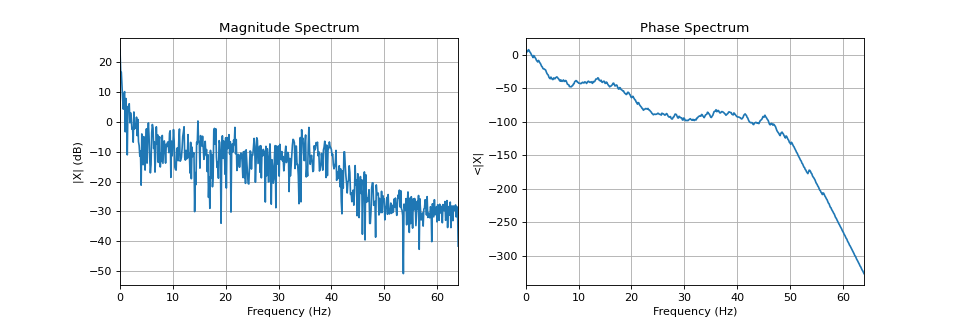spkit.dft_synthesis¶
- spkit.dft_synthesis(mX, pX, M=None, scaling_dB=True, window=None)¶
Discrete Fourier Transform: Synthesis (iDFT)
Synthesis of a signal using the Discrete Fourier Transform from positive spectra
- Parameters:
- mX: 1d-array
magnitude spectrum - (of shape=int((N/2)+1)) for N-point FFT (output of
dft_synthesis)
- pX: same size as mX
phase spectrum (output of
dft_synthesis)
- Mint, deafult=None
length of signal: x, if None, then M = N = 2*(len(mX)-1)
- window: default=None
rescaling signal, undoing the scaling
if provided, synthesized signal is rescalled with corresponding window function
if None, then reconstructed signal will have different scale than original signal,
reconstructed signal will still have windowing effect, if window was used other than ‘boxcar’ - rectangual
- scaling_dB, bool, deafult=True,
if false, then linear scale of spectrum is assumed, else in dB
- Returns:
- y: output signal of shape (M,)
See also
dft_analysisDiscreet Fourier Transform - DFT
stft_analysisShort-Time Fourier Transform - STFT
stft_synthesisInverse Short-Time Fourier Transform - iSTFT
frftFractional Frourier Transform - FRFT
ifrftInverse Fractional Frourier Transform - iFRFT
sineModel_analysisSinasodal Model Decomposition
sineModel_synthesisSinasodal Model Synthesis
Notes
#TODO
References
Examples
#sp.dft_synthesis import numpy as np import matplotlib.pyplot as plt import spkit as sp x,fs = sp.data.eeg_sample_1ch(ch=1) x = x[:int(fs*5)] t = np.arange(len(x))/fs mX, pX, N = sp.dft_analysis(x,plot=True,fs=fs,window='boxcar') y = sp.dft_synthesis(mX,pX,M=len(x),window='boxcar') plt.figure(figsize=(10,3)) plt.plot(t,x,label='x: input signal') plt.plot(t,y,label='y: reconstructed signal') plt.plot(t,x-y,label='x-y: residual') plt.xlim([t[0],t[-1]]) plt.xlabel('time (s)') plt.legend() plt.show()








